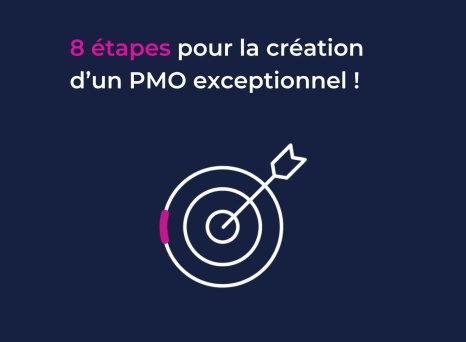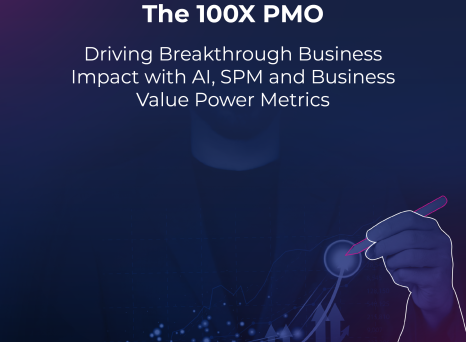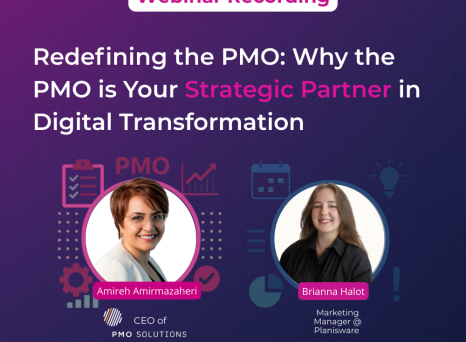When times are tough, an ordinary person will spend less on luxuries. Instead, they’ll save their money for things important to survive: healthcare, heating, and feeding their families.
Businesses are no different. In the event of an economic downturn, smart companies will trim the fat by reducing unnecessary services and infrastructure. Some, in order to keep their heads above water, may even pare down to the essential, business-critical resources.
But according to the PMI, the PMO is often the first business function executives cancel during turbulent times. This is despite the fact that it’s not just a luxury, but a necessity, thanks to the strategic value it provides through accurate data, standardization of processes, and increased visibility over projects. And despite the fact that it can help businesses shore up against oncoming troubles—and even emerge unscathed.
In this article, we’ll examine the role of the digital PMO during an economic downturn, and how it can bolster your financials in 4 ways.
1. Optimizing Your Resource Management
Yes, budgets are tight. You might wonder at the logic of hiring new team members or sourcing materials for a project that, in this current climate, may or may not happen.
But think of it another way. What if that big project does get the go-ahead? You might end up spending precious money on last-minute fills for your resource gaps. You might struggle to fill those resource gaps at all.
You might also find some difficulty in effectively allocating team members to parallel tasks so that there aren’t large project dependencies. The challenge lies in ensuring you have the resources you need—and only those you need.
By standardizing resource allocation and capacity planning processes, the digital PMO can help project teams more accurately request and use resources. A PMO will use a single source of truth so everyone across the organization can benefit from accurate data and complete visibility over projects.
For example, a digital PMO will give you the ability to take both a wide and granular view of your resource allocation. You can look at the bigger picture, identify project convergence points, and maneuver your team members into tasks that will finish at the same time. You can also dig down and identify risks with team members at an individual level, such as exceeding your budget or approaching credit limits.
2. Killing Off Your Zombie Projects
“Zombies are projects that, for any number of reasons, fail to fulfill their promise and yet keep shuffling along, sucking up resources without any real hope of having a meaningful impact on the company’s strategy or revenue prospects.” - Harvard Business Review
Zombie projects aren’t uncommon. And their very existence isn’t an indication of organizational inefficiencies. After all, at the time you signed off on them, they likely looked very promising indeed.
But something happened along the way that meant the project lost value. And letting it dwindle on indefinitely is an indication of inefficiency. It signals a need for more visibility over resource allocation and better alignment with business strategy.
A digital PMO can identify those idle projects that are still receiving active resources, so you can shut them down. It does this by being objective. There might be someone in your organization so invested in the initial idea of the project that they find it hard to let it go—even a zombie can still be someone’s baby.
A digital PMO will ask the tough questions to determine the project’s value—questions such as, “Does it align with strategic goals?” and, “Does the ROI outweigh the TCO?”. Only those projects that meet the PMO’s stringent criteria stand a chance of resuscitation, regardless of who the project stakeholders are.
3. Prioritizing Your Projects
Now that the PMO has eliminated the walking dead, you’re left with only those projects that provide value. But of course, some will be more valuable than others. For instance, some will be more likely to generate a higher ROI and, with a recession looming, this is nothing to sniff at.
Again, the ability of a digital PMO to be objective comes into play. By aligning with strategic values and using project prioritization matrices, the PMO can select valuable project streams. Depending on your organization’s business goals, it will weigh up each project’s potential. If ROI is the main aim, it will prioritize those bigger earners. But there are other metrics that can take pride of place when it comes to assigning value. These can include:
- Total Cost of Ownership (TCO): This matters especially for organizations that don’t have deep pockets right now. A lower total cost of ownership for a smaller return might help keep some companies afloat.
- Time: For those organizations that are close to capacity, a project with a relatively undemanding schedule might seem more realistic.
- Simplicity: This is a broad metric, but one that resonates in times of economic instability. Perhaps you need a project with easy-to-source materials, for example.
The PMO will then score each project based on its chosen metrics so it can objectively rank them in order of importance. It may choose to use something like the Eisenhower prioritization matrix to classify projects on a scale from “urgent and important” to “neither urgent nor important”. If any project falls into the “neither” category, it’s a zombie that’s slipped through the hole in your wire fence.
4. Boosting Productivity
Let’s be clear. When we say, “boosting productivity” we’re not only talking about increasing output. Rather, we’re talking about increasing the value of your output.
Why is this different? Well, a team can operate at nearly full capacity, completing task after task, churning out deliverable after deliverable. But without the ability to step back and identify value-added actions, your organization may be efficient but not necessarily productive.
It’s therefore necessary to have a little wiggle room when it comes to both tasks and projects. This allows you to say yes to those dream projects that fall from the sky, without deprioritizing other important work.
Take a look at your team’s performance. Are there any instances when the quality of the output could have been better? Perhaps there’s a history of poor stakeholder feedback. It’s possible, if you looked hard, that this would correlate with times of increased capacity.
A digital PMO can clearly see these correlations. It can monitor teams’ outputs and identify opportunities for enhancing efficiency and productivity. For instance, it could calculate the optimum amount of time team members should have “free” so they can do their work well and respond to sudden opportunities.
More than this, a digital PMO will also codify its processes so that once it identifies the right way of approaching a problem, you will have the solution to hand every time. It will document both project failures and successes so you can learn from them. This will enable you to engage in a process of continuous improvement where you reduce resource waste and increase quality.
Upping Your Value During a Downturn
An economic downturn can cause many organizations to tighten their purse strings and make cuts—to resources, processes, and even business-critical functions. But smart companies have the knowledge and tools at their disposal to come out on top.
A digital PMO enhances project management maturity by providing the transparency to objectively assess every project’s strategic value. So you can keep your digital PMO intact during an economic downturn, instead of canceling it.


